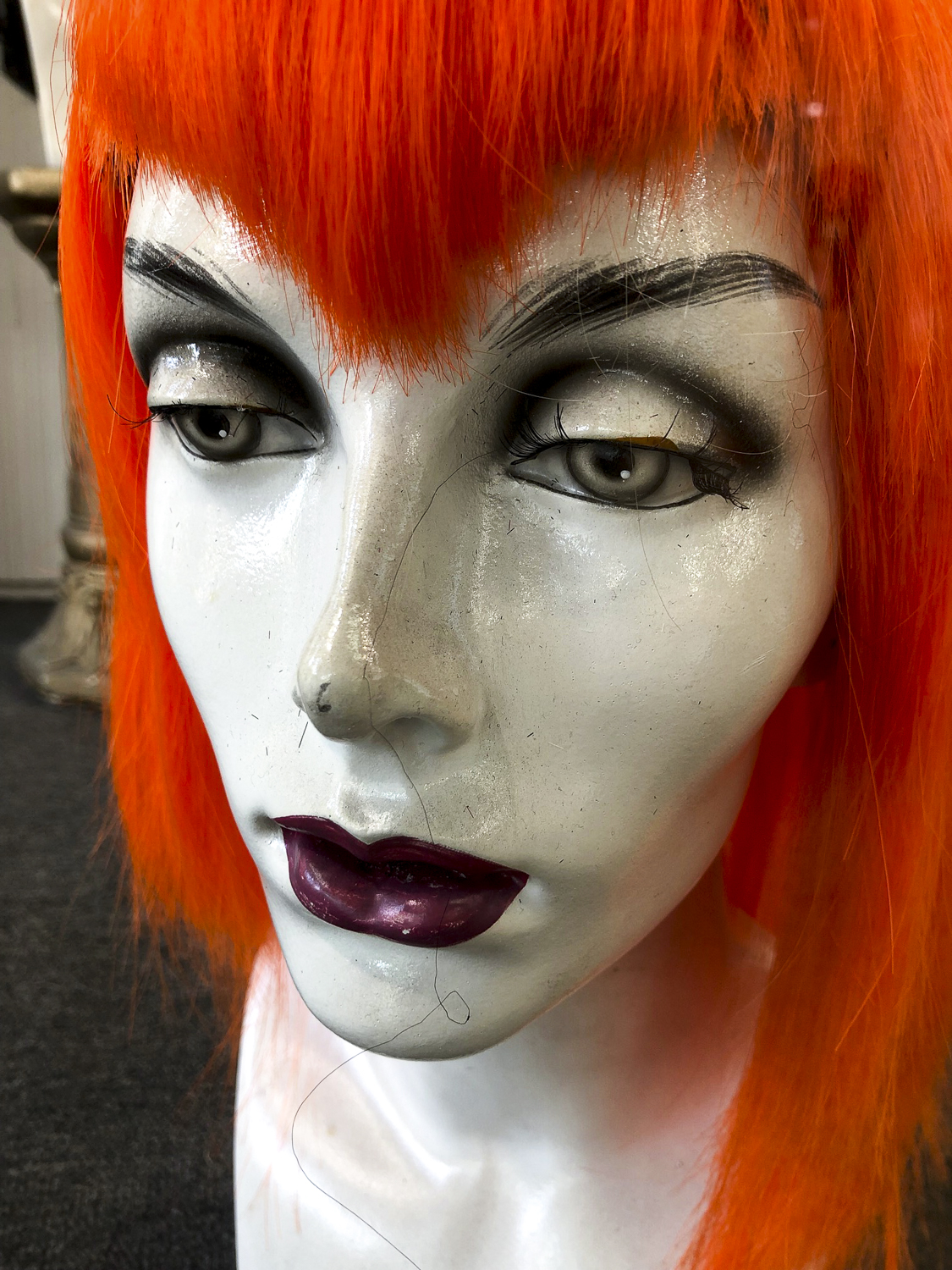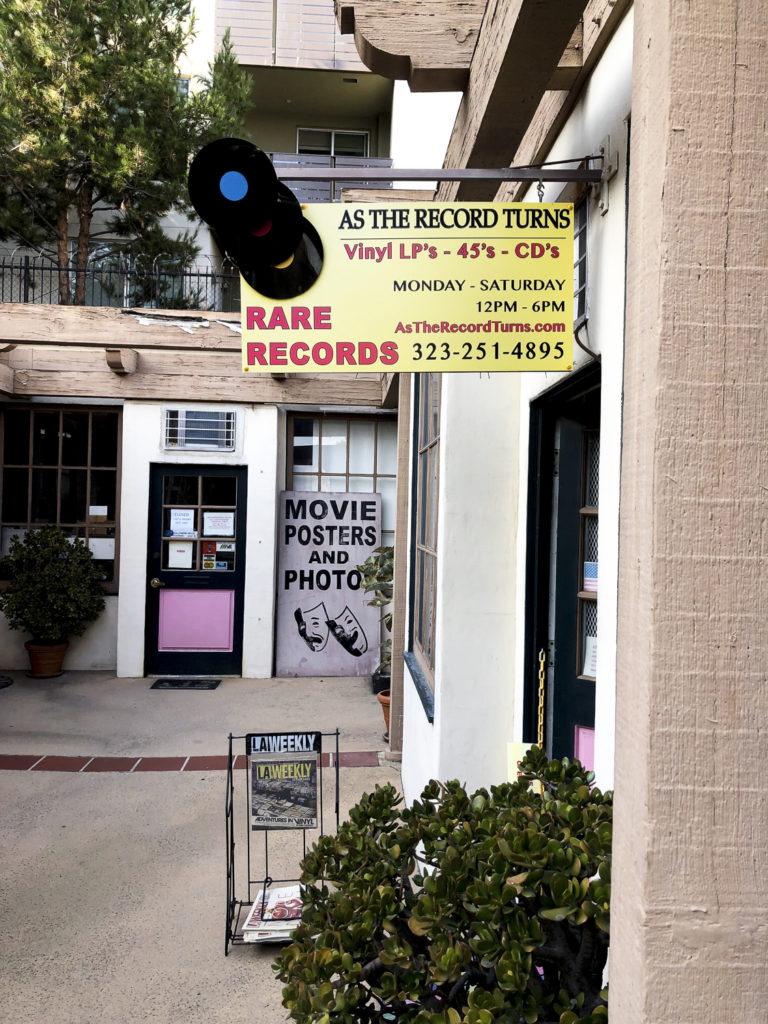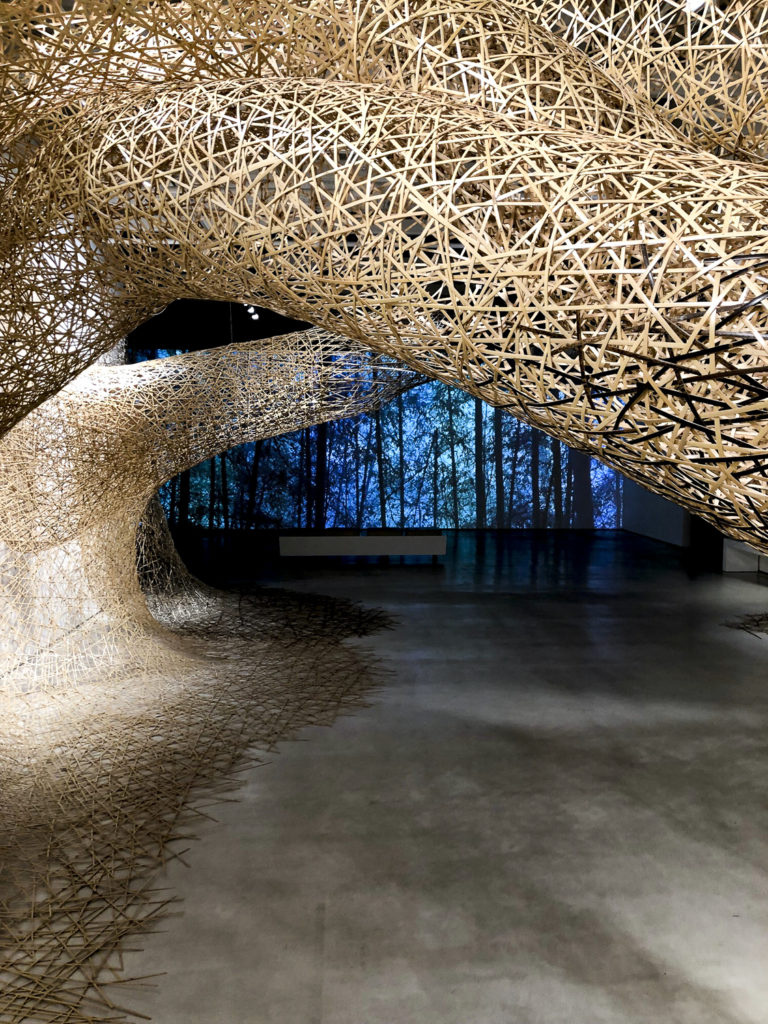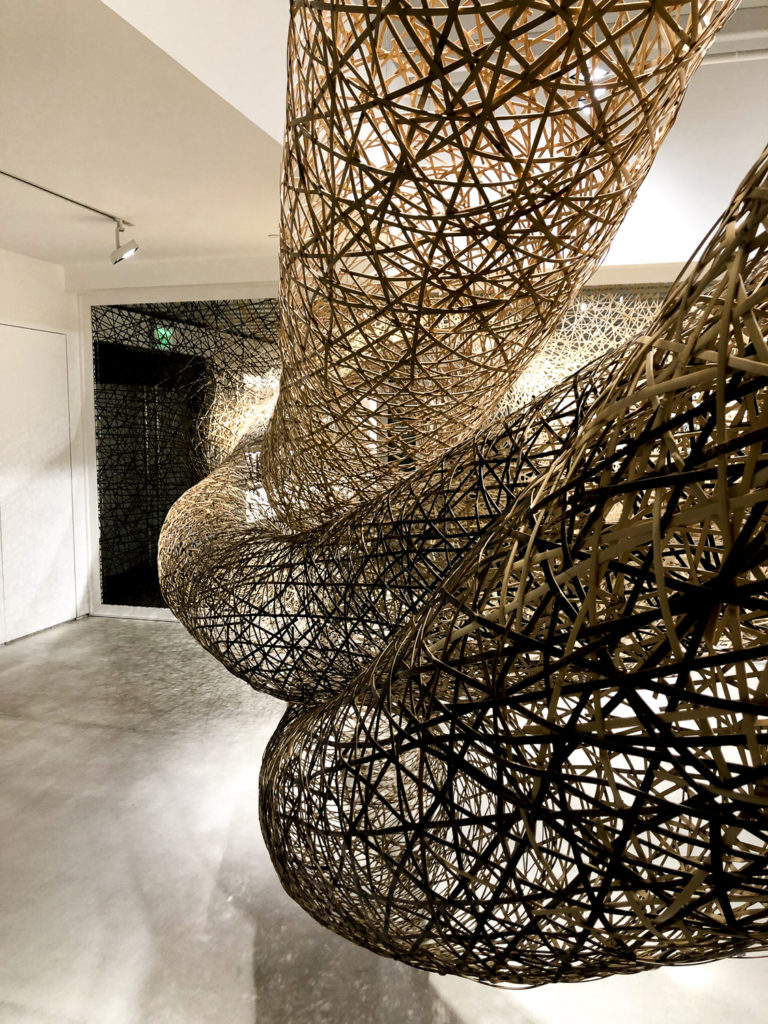A flâneur takes to the streets, uncovering surprises — both modest and startling — on walks through a city that’s reinventing itself around every corner.
“Hollywood Boulevard may be a place that, if you have never been to Los Angeles, you must visit in order to tell everyone at home that you’ve been there. Its let-down is surely legendary at this point and well-documented in every guidebook. And yet, it may well be the most-traveled pedestrian street in the city.”
When I was hardly a teenager, my grandparents, who lived about a block off Franklin in Bronson Canyon, told me that at one time, they would finish dinner and walk down to Hollywood Boulevard, where they’d amble along, heading west toward Grauman’s Chinese Theatre — now called the TCL Chinese Theatre — window shopping all the while. The prospect of this ever having been possible, that Hollywood Boulevard was once a destination for a pleasant evening walk, was astonishing to me even at that young age.
The grit that at least some New Yorkers remember fondly in Times Square had by then found a worthy competitor in Hollywood Boulevard. For Los Angeles residents, this image of the street took hold, for good reason, and clung fast in the years that followed to today, despite the close proximity of au courant restaurants and hotels that attempt to bottle contemporary hip in their guest rooms and rooftop bars. Angelenos may have returned to Hollywood, to live and to work and to play, but I was curious whether they had returned to Hollywood Boulevard, specifically. I began my investigation by parking in front of my grandparents’ old house, where my grandfather used to sweep up the post-coital detritus left by those who’d been overcome by passion while cruising the boulevard.
“The prospect of this ever having been possible, that Hollywood Boulevard was once a destination for a pleasant evening walk, was astonishing to me even at that young age.”
As I made my way along Canyon to join Franklin, I slowed down to take in the Craftsman-style homes, many of which dwarf their more typical Craftsman contemporaries in other communities, with second floors and sprawling footprints. So many have been restored along this stretch that they emit a pride in their numbers, like simple wedding cakes lined up on a table. They capture another side of old Hollywood — but one in which the past steps forward to rival if not outshine the present.
It’s a little sleepy at Franklin Village in the mid-afternoon as if the neighborhood were engaging in a brief nap before the evening bustle to come. A few late lunchers remain at their tables, the wreckage of their meal still in front of them, the waiters refusing to clear their mess until the diners have removed themselves. The local newsstand, a welcome relic that remains a magnet for the eyes, still beckons from The Daily Planet.
I join Hollywood Boulevard at Gower, and, from this distance, it’s got a Vegas-like lure, the marquees of the Fonda and, further down, the Pantages, pushing their way out over the sidewalk. If the Pantages is still a neon-lover’s dream — alongside the neon of dive bar par excellence, The Frolic Room next door — then the Fonda has suffered from its update, being fitted with a plastic marquee that would seem to be better placed on a suburban movie theater. There isn’t a trace of grandeur unless you are stirred by the names of the groups performing there tonight.

The original Pantages marquee now sandwiches an ever-changing digital screen that advertises not only the show currently being staged but also various other diversions around town. It is enough of a distraction in itself to draw the eye of the passing motorist long enough to find themselves rear-ending the similarly distracted driver in front of them. And then you find yourself at Vine, certainly, one of the crossroads of the city, where those coming from the Valley or from downtown exit the freeway and take the modest roller-coaster-hill down into Hollywood proper, passing the Capitol Records building that continues to function as a welcoming — and non-leaning — Tower of Pisa for those who see it for the first time.
“If I thought there might be discoveries to be made along Hollywood Boulevard, I am having little luck. Too much of it is as expected.”
Between Vine and Highland, there are seven relatively short blocks in which Hollywood Boulevard endures. You might salute the survivor that is Musso and Frank, taking up a half block just west of Cherokee, and, as you walk, think of how refreshing a martini might be from the hand of one of the bartenders there. Or you might lament the state of the Pacific Theater, its radio towers still proudly piercing the sky above what appears to be an empty building
Sharing the same block with Musso and Frank is Jameson’s Irish Pub, where I find exhausted-looking tourists having claimed seats that offer views of the sidewalk and the boulevard. They are not so much disappointed as they are in a state of surrender, wondering how they came to be here, sipping on a $20 drink while looking at a street that is devoid of the fantasies that brought them here. To reclaim that, they’ll need to go to the movies.
Hollywood Boulevard may be a place that, if you have never been to Los Angeles, you must visit in order to tell everyone at home that you’ve been there. Its let-down is surely legendary at this point and well-documented in every guidebook. And yet, it may well be the most-traveled pedestrian street in the city — not counting outdoor malls. The Walk of Fame may be enough reason to come, first a jumble of unrecognized names blotted by gum and worse until, as I saw, a young man spots Harrison Ford’s star and brakes hard. He points his phone, announcing the name of the actor to his friend who waits beside him. Photo captured, they’ve gotten what they came for: a moment of discovery amidst so many they’d already dismissed.
Artisan’s Patio, just off the very beaten path of Hollywood Boulevard, is home to vinyl record store As the Record Turns. Photos by Lincoln Wheeler.
If I thought there might be discoveries to be made along Hollywood Boulevard, I am having little luck. Too much of it is as expected. As you get closer to Vine, the interchangeable souvenir shops, each of them looking exactly like the previous one, stand cheek-by-jowl. The stores seem to know that potential customers may deny them initially, but, eventually, they will relent and allow themselves to be tempted by the T-shirts and the shot glasses, both of which will cause a little crease of wonder in the purchaser as they wonder why they bought them to begin with as they are pulled from their suitcases at home.
But all isn’t lost for the wandering resident. One notable find is a shop called As the Record Turns at the end of Artisan’s Patio, a curious passage leading off from the boulevard. Now in its 34th year of business, the vinyl record store comes with jazz treasures from Coltrane to Dolphy displayed on the wall amidst a range of other music styles on offer. And it turns out that window shopping is not dead. There are holdouts to savor as your eyes play along the storefronts: full-size military figures wearing the latest in surplus gear at The Supply Sergeant and sharing the same block are Mars-orange and Mercury-blue wigs affixed to aloof model heads who have found the fountain of youth.
A glimpse at “LIFE CYCLES” from Japanese bamboo artist Tanabe Chikuunsai IV at Japan House L.A. The exhibit is open to the public and will come to a close Jan. 15, 2023. Photos by Lincoln Wheeler.
This mirage of dress-up fades once I reach Hollywood and Highland, which offers the other bookend to Hollywood Boulevard. There is, of course, the indoor/outdoor mall which contains the Dolby Theater and memories of all past and future slaps heard ‘round the world. And then there is the aforementioned TCL Chinese Theatre, still grand enough to pull in a stroller all the way from Bronson Canyon. The real revelation is a show of bamboo art at Japan House L.A. This is perhaps the greatest anomaly of the day, a white-walled gallery showcasing Japanese artists, as well as crafts from various artisans, the majority of it refined to the extent that you believe you are finally viewing the perfect ideal of a men’s tie or cooking utensil. The bamboo artwork by Tanabe Chikuunsai IV is a tour de force, forming tubular shapes that manage to somehow freeze their action as they spiral around the gallery space and splay out across floors and ceilings as if exploding into an alien growth. They are simultaneously gorgeous and weirder than anything I saw on Hollywood.
As I beat a retreat from the boulevard and head up Argyle toward Franklin, I am taken over by the hunger I was unable to satiate amidst the hole-in-the-wall pizza joints and forlorn chain restaurants. At the corner of a mini-mall, in the shadow of the 101 overpass, is For The Win, a “smashburger” specialist. I pass on the burger and order a side of fries and a Mexican Coke and then take a table outside in the parking lot to look past the commuter traffic and up at the golden sunlight reflected on the Hollywood Tower Apartments. A server slaps a plastic tray down in front of me and there are the fries and coke, looking perfectly average. That For The Win has discovered not how to equal McDonald’s but to better them at the fry game is to score one for the dreamers. Maybe someday they’ll make a movie about them.






